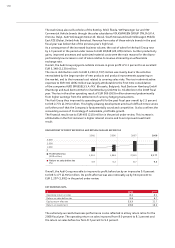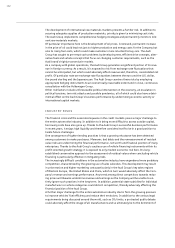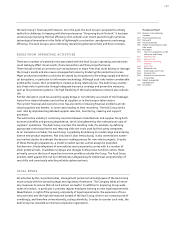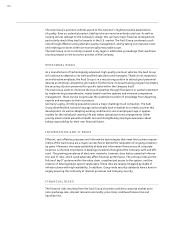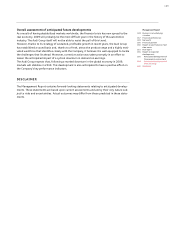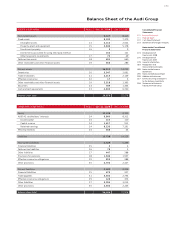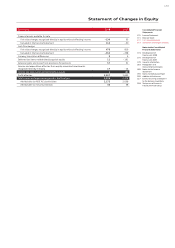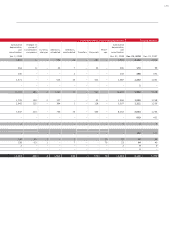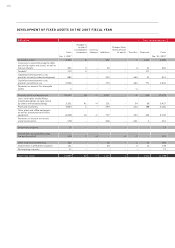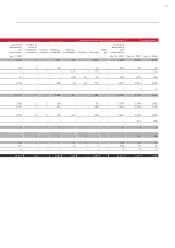Audi 2008 Annual Report Download - page 186
Download and view the complete annual report
Please find page 186 of the 2008 Audi annual report below. You can navigate through the pages in the report by either clicking on the pages listed below, or by using the keyword search tool below to find specific information within the annual report.
167
Management Report
128 Business and underlying
situation
157 Financial performance
159 Net worth
160 Financial position
160 Report on post-balance sheet
date events
161 Risk report
165 Report on expected
developments
165 Anticipated development of
the economic environment
166 Anticipated development of
the Audi Group
169 Disclaimer
The goal in Germany, the highest-volume market for Audi vehicles, is to build on the already
strong market position in 2009. Alongside the very successful Audi A4 and Audi A5 car lines,
this process will be aided by the new Audi Q5, which has been very well received by customers,
the trade and journalists.
The Company also expects that these models will provide a vital stimulus for car markets in
Western Europe. There too, however, the Audi brand will not entirely escape the variously sharp
downturn that is forecast for some of these markets.
In Central and Eastern Europe, and most particularly in Russia, the growth in deliveries of recent
years will be brought to a halt by the sharp fall in car demand. However, the Company is con-
fident that it will be able to further strengthen the competitive position of the Audi brand.
In China, its most important foreign market, the Audi brand expects to consolidate its leading
position in the premium segment. The Audi A4 L, which arrived on that market this year and is
being built exclusively for China, should play a key role in comprehensively meeting customer
requirements for modern mobility in a spacious, comfortable vehicle.
The positive trend of recent years is set to continue in the Indian car market, where assembly of
the new Audi A4 began in the past fiscal year alongside local CKD assembly of the Audi A6.
The situation in the U.S. auto market will remain exceptionally difficult in 2009. The Company is
seeking to capture increased market share with the launch of its ultra-efficient diesel technology
and new models such as the Audi Q5.
Following the sharp drop in international demand for cars in 2009, the Audi Group expects
markets to stabilize in 2010. This development is anticipated to lead to a rise in the
Audi Group’s deliveries.
Comprehensive measures within the context of business activities
The Audi Group will continue to monitor the development of the Company’s major sales markets
using early indicators so that it can respond accordingly by adjusting its production volume.
Being able to transfer production between the various locations using the production turntable
is just one of the options that give the Company a vital degree of flexibility. Moreover, working
hour models, flexible shift systems and timebanking accounts have been agreed in recent years
in close consultation with employee representatives, giving the Company leeway to cushion
short-term fluctuations in production if needed. With regard to the impact of market fluctua-
tions, the Company will use the options afforded by the framework of operating requirements,
negotiated pay agreements and laws to stabilize the employment situation of its core work-
force.
And over the next few months, measures already underway that seek to permanently improve
processes and costs in all divisions will be pursued with unrelenting intensity.
In view of the difficult current economic environment, the Company is also paying particular
attention to outside partners. At the sourcing end, its priority is to exclude any disruption to
the production process from key suppliers going out of business. In close consultation with the
Volkswagen Group, the Audi Group will further intensify its collaboration with key suppliers by
way of comprehensive risk management. This equally applies to the sales end. A committee has
been set up within the Company to work out jointly with dealers experiencing difficulties how
potential financial bottlenecks can be overcome.



